I realised a little while ago that I tend to rave on about places in Asia that I’ve been to – especially Elephant Nature Park – but not really raved very much about the beautiful little country of my birth. So here’s a little rant about my place – Aotearoa, ‘Land of the Long White Cloud’. Also know as Godzone by the denizens of the land, or Middle Earth to the world, since Peter Jackson used the exquisite scenery here as the background for The Hobbit and Lord of the Rings. We may not have elephants here, but we do have hobbits. Yessss, we doesss.
I’ve been lucky enough to see a lot of my country. I hitchhiked around it when I was young, travelled around it when my kids were young and we lived in a 1948 Leyland Half-Cab bus, and still travel it a fair bit due to work and other interests. I’ve tossed a few photos into the mix here that I’ve taken relatively recently in a small selection of places in the North Island of New Zealand.
New Zealand, or Aotearoa, is a country of many geological features. If you drove from one end to the other, you could, for instance, swim in the Pacific Ocean, cruise through lush rain forest, vehiculate along rolling plains, traverse a volcanic desert plateau, take a moment to go snow skiing, then meander through folded, unironed-looking countryside, pass yet another volcano, take a ferry from the North Island to the South, motor down a very wet West Coast (raincoats and spearguns for the mosquitoes mandatory), pan for gold, climb a glacier, drive over to the East Coast – with the occasional pause while the council rebuilds the road after a landslide – watch some whales, dive for crayfish, take photos of seals and sail around some beautiful sounds. I recommend taking some strong coffee with you if you plan on doing all this in one day though.
I’ll start with some photos of the gorgeous little town of Whangamata, at the foot of the Coromandel Peninsular on the East Coast of the North Island. If you look on a New Zealand map, it’s one of the sticky-out bits on the right of the large island at the top.
This is at the mouth the estuary in Whangamata, showing a flowering Pohutukawa tree, also known as the ‘New Zealand Christmas Tree’, because it flowers around December. If it flowers before December, this is taken by Kiwis (local people, not fruit – they’re called ‘kiwifruit’ here) as a sign of a hot summer ahead. They make fantastic trees for climbing, as their branches start low and spread out almost horizontally. I spent many happy hours being cradled in them as a kid. They prefer to be right beside the coast and they’re often seen clinging to cliffs so precarious a Himalayan mountain goat would tremble at the knees.
Pohutukawa and its cousin Rata feature strongly in traditional Maori lore. (Maori being tangata whenua – ‘people of the land’.) There’s a gnarled, 800-year-old Pohutukawa on a cliff at the top of Cape Reinga, on the northern tip of New Zealand. It’s known as ‘The Place of Leaping’ by the Maori, the beginning of the journey of those who have died to their traditional homeland ‘Hawaiiki’. It’s said that their spirits leap of the headland, climb down the roots and descend into the underworld on their return home.
Whangamata has several little islands just off its coast. Below is Clarke Island, or ‘Hauturu’.
This is what it looks like around dinnertime.
If you walk back up the dunes towards the nature reserve, you’ll go past a nice little pond that houses ducks and frogs. I sometimes sit here and catch up with the Gossip of the Amphibians.

A duck pond at the local park, host to many frogs and ducks. A great place to walk by a little while before dusk. Whangamata, Coromandel, North Island.
There are many hills and mountainous ranges in New Zealand. And roads that wind up, through and around them. This can be quite vomit-inducing to the uninitiated, so if you’re touring NZ in a car, for gawd’s sake take a few strong paper bags with you. I was wondering the other day if that’s why I wasn’t sick when travelling up the Himalayas (see that story here) – because I’m used to traveling on curly roads.

Fishing – favourite pastime of many a Kiwi bloke. I strongly suspect that in many cases it’s used as a fairly legitimate excuse to get out of the house… Looking towards the mountain ranges on the way to Thames, from the Hauraki Plains. Coromandel Peninsula, North Island.
Drive from Whangamata through to the Waikato region, and you’ll probably see Mount Te Aroha. ‘Aroha’ in Maori means ‘love’. I relate to this very much, having stayed untold times with my beloved grandparents, who lived at the foot of this mountain, as a child. Maori legend has it that a chief’s son, travelling home from visiting family, ascended it and from the top he could see his tribal home, and this bought him much joy. Thus he named it ‘Aroha ki tai’ – the ‘Mountain of Aroha’.
It’s a pretty unique little place. There’s a domain there, the oldest intact Edwardian domain in New Zealand. My memories abound with times my brother and I went hunting for frogs in the ponds, swimming in the mineral pools (created to utilize the soda springs that naturally occur here) and nosying around the bandstands and villas sprinkled around the grounds. Just up the mountain a little bit is the only natural soda water geyser in the world – the Mokena Geyser. We used to love going up there and waiting for it to blow its spout of crystal clear hot soda water, which it does about every 40 minutes.
Carry on down the line a bit, towards the center of the North Island, and you’ll end up, probably to your surpise, in a desert. A high, volcanic one. With live volcanoes. And yes, the volcanoes do explode from time to time, so before approaching this area, put your sandwiches in a sealed box to protect them from ash.
This means you have now entered Tongariro National Park, the oldest national park in New Zealand and the fourth national park established in the world. The original name for it is ‘Onetapu’ meaning ‘Forbidden Sands’. It actually has volcanic dunes, of which there are only a few in the entire world. This is an area of low foliage productivity and extreme climate. The only inhabitants here are the New Zealand Army Waiouru Training Camp, the guests of Rangipo Prison and a herd of feral horses – otherwise known as the Kaimanawa Horses, descended from escapee domestic horses that made their bids for freedom in the 19th and 20th centuries.

Taken on Desert Road, central North Island, New Zealand. This is Mount Ruapehu, one of three peaks in the area and the most eruptive. In Maori legend, Ruapehu is considered to the the female of the three peaks. I’m sure these two things are in no way connected…
There are three active volcanoes in the middle of this park – Tongariro, Ngauruhoe and Ruapehu, all considered to be ‘tapu’ (sacred) by Maori.
Ruapehu – apparently ‘rua’ meaning ‘pit’ and ‘pehu’ meaning ‘to explode’, is one of the world’s most active volcanoes, contains the North Island’s only glaciers, and, in typical Kiwi ‘she’ll be right’ fashion, has some major skifields perched on the side of it. Never let it be said that New Zealanders are a bunch of fraidy cats. The last eruption there was a hydrothermal one in 2007, which was accompanied by a 7 minute long earthquake that registered 2.9 on the Richter Scale. It was about this time that all the skiers and ski lodge staff decided it would be prudent to go the pub (that’s ‘bar’ to you American readers) for a beer. About 200 miles away.
Tongariro, means ‘tonga’: south wind and ‘riro’: borne away. Legend speaks of the plea of the priest Ngatoroirangi as he lay dying on the summit awaiting fire from the gods in “Hawaiki”. “Ka riro au I te tonga” said he (‘I am borne away in the bitter south wind.’).
The most common interpretation of the name Ngauruhoe is Nga-Uru-Hoe meaning ‘throwing hot stones’. This peak featured as Mount Doom in Lord of the Rings, where they filmed the Battle of the Last Alliance. If you park up, stay very quiet and watch for a while through binoculars, you may be able to spot hobbits clambering around its slopes.
You can read an excellent page on these mountains here.

Mount Ngauruhoe, Central Plateau, North Island, New Zealand. Ngauruhoe erupted 45 times in the 20th century, most recently in 1977. Now you can see why ‘Lord of the Rings’ was made in New Zealand… 🙂
Further on down the line, if you’re mosying down the West Coast, you’ll come across Mount Taranaki, ex-husband of Mount Ruapehu by legendary accounts. ‘Tara’ meaning ‘mountain peak’ and ‘Naki’ thought to mean ‘shining’ and probably referring to the snow that covers it in the winter months. Taranaki is yet another active peak – apparently called a stratovolcano – but nowhere as cheeky as his erupty ex-wife, having last grumbled and burped around the 1850’s, so there’s no need to prepare for a pub rush with this one.
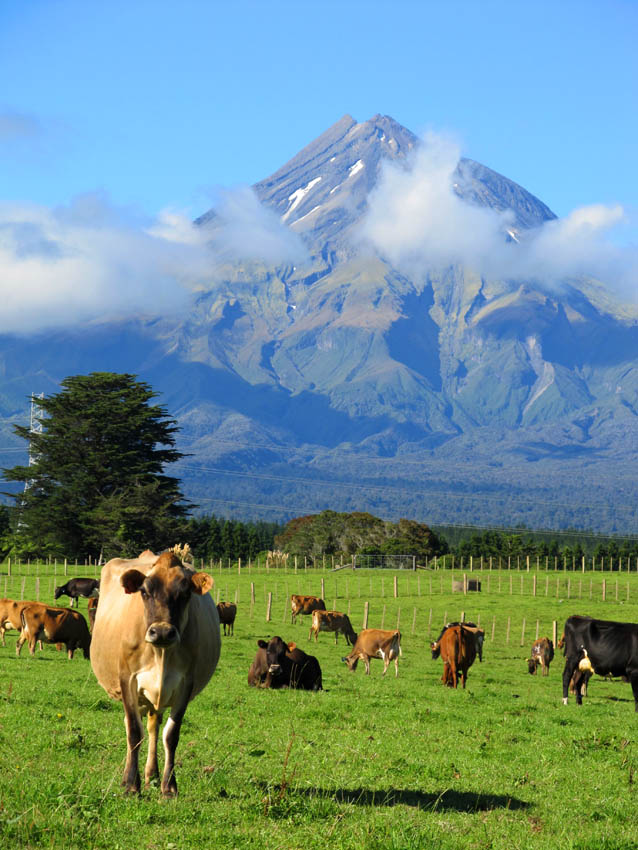
Mount Taranaki, West Coast, North Island. Also featuring in the foreground, ‘Betsy’, of New Zealand Bovine Models Inc, TM.
On the way to Taranaki’s back yard, you’ll go past interesting cliff faces, really foldy bits of land, gorgeous coastal views and other sites of both curious and beautiful nature.
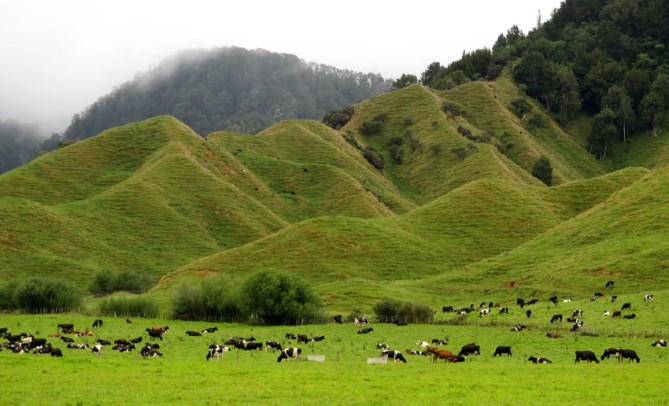
Viewed from the West Coast road, on the way to Taranaki, North Island, New Zealand. We’re very busy people. We don’t always get around to doing the ironing…

Coast around the ‘Three Sisters’ region, West Coast, New Zealand. Guest appearance by Mount Taranaki in the background.
So there you have it, a few of the many gorgeous vistas that abound in my little country. I’m very thirsty now and there’s some wine in my fridge that might go bad and needs tending to, so I’ll leave you to rush off and book your plane tickets to Middle Earth. I’ll tell the pub you might be on your way. Seeya.


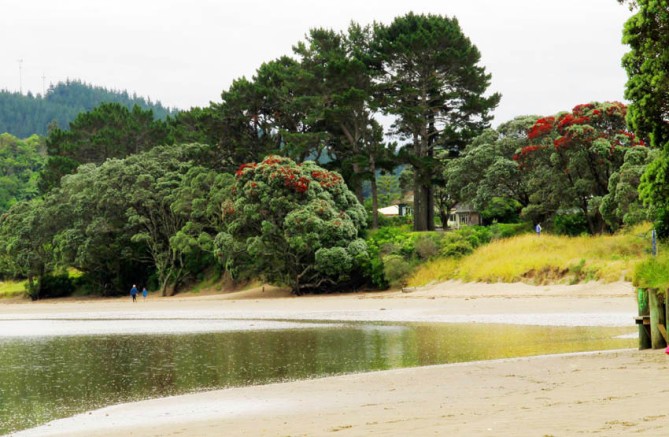

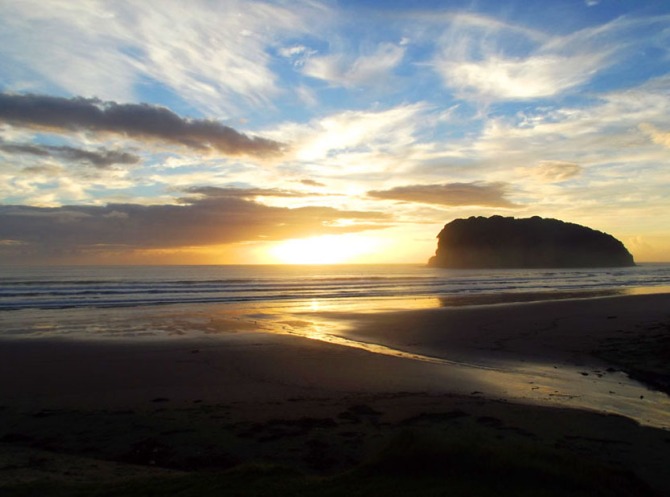






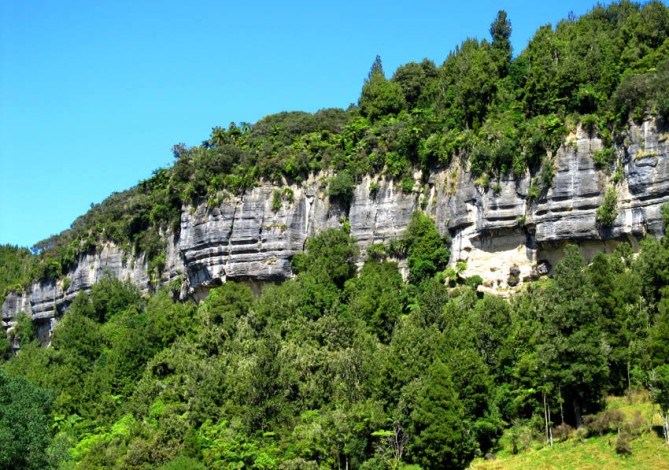




very beautiful 🙂
LikeLike
Thank you very much. 🙂 I like the look of your place too. 🙂
LikeLike
Thank you 🙂 my place – worth to see for sure! 🙂
LikeLike
Hi, it made me feel awed and quite touched to see and read the descriptions about the place I live and where I was born (Whangamata & Taranaki) What an amazing country this is! Sometimes it takes looking through the lens of someone else’s perspective to remind us what we have in front of our noses…great work
LikeLike
Thank you Jodi. I’m glad you enjoyed. 😀
LikeLike
Yep, you have wrapped it up – great words superbly illustrated, no doubt about it, we can all travel far and wide but at the end of the day there is no place like home, and definately no place like Aotearoa Middle Earth Paradise N.Z. – not another place in the world I would rather live.
LikeLike
Thank you kindly. Yes, we are very lucky. I think it’s the Kiwis that travel, or who know travellers from other countries, that realise that more strongly. I love to travel, but I also love to come home and see my own place through fresh eyes. Shame we have no elephants though… 😀
LikeLike
Pingback: Welcome to New Zealand – Please Don’t Kill Us!!! | raveburbleblog